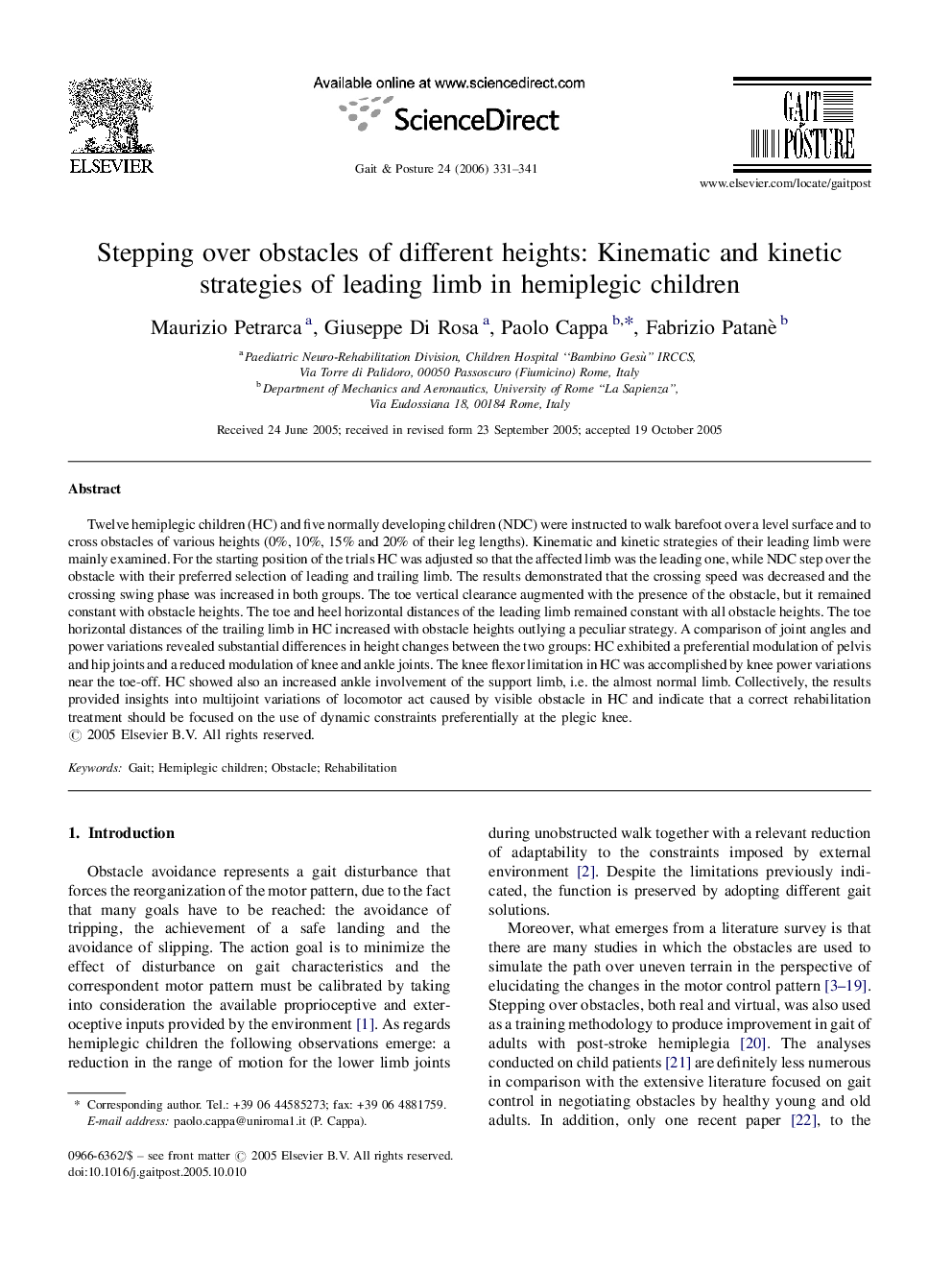| کد مقاله | کد نشریه | سال انتشار | مقاله انگلیسی | نسخه تمام متن |
|---|---|---|---|---|
| 4058652 | 1265728 | 2006 | 11 صفحه PDF | دانلود رایگان |

Twelve hemiplegic children (HC) and five normally developing children (NDC) were instructed to walk barefoot over a level surface and to cross obstacles of various heights (0%, 10%, 15% and 20% of their leg lengths). Kinematic and kinetic strategies of their leading limb were mainly examined. For the starting position of the trials HC was adjusted so that the affected limb was the leading one, while NDC step over the obstacle with their preferred selection of leading and trailing limb. The results demonstrated that the crossing speed was decreased and the crossing swing phase was increased in both groups. The toe vertical clearance augmented with the presence of the obstacle, but it remained constant with obstacle heights. The toe and heel horizontal distances of the leading limb remained constant with all obstacle heights. The toe horizontal distances of the trailing limb in HC increased with obstacle heights outlying a peculiar strategy. A comparison of joint angles and power variations revealed substantial differences in height changes between the two groups: HC exhibited a preferential modulation of pelvis and hip joints and a reduced modulation of knee and ankle joints. The knee flexor limitation in HC was accomplished by knee power variations near the toe-off. HC showed also an increased ankle involvement of the support limb, i.e. the almost normal limb. Collectively, the results provided insights into multijoint variations of locomotor act caused by visible obstacle in HC and indicate that a correct rehabilitation treatment should be focused on the use of dynamic constraints preferentially at the plegic knee.
Journal: Gait & Posture - Volume 24, Issue 3, November 2006, Pages 331–341